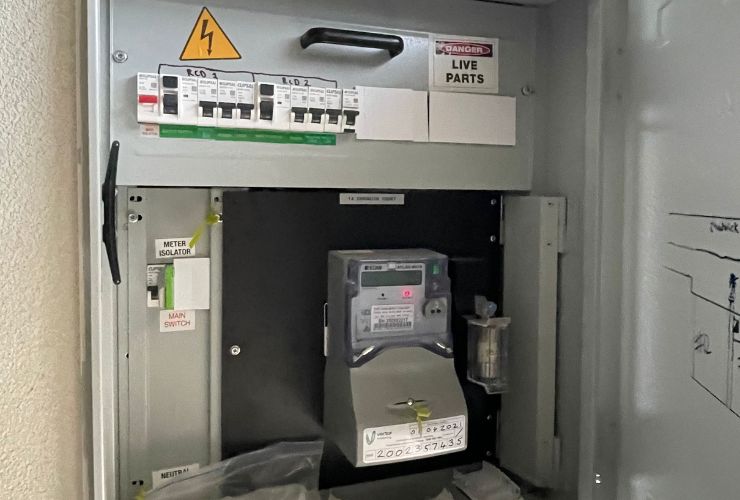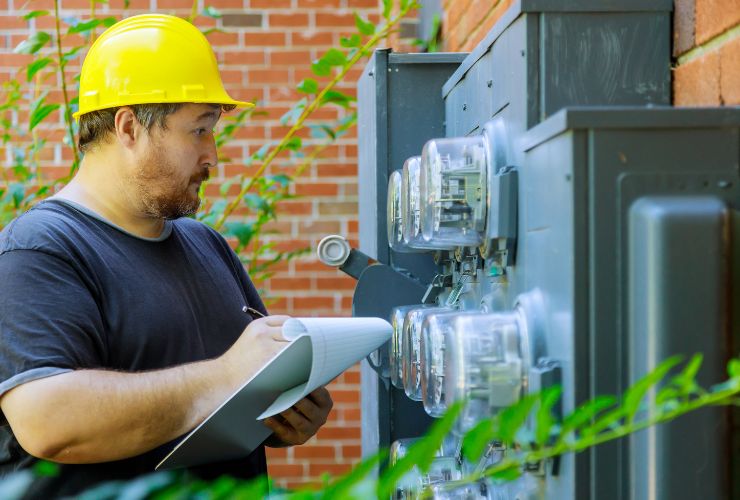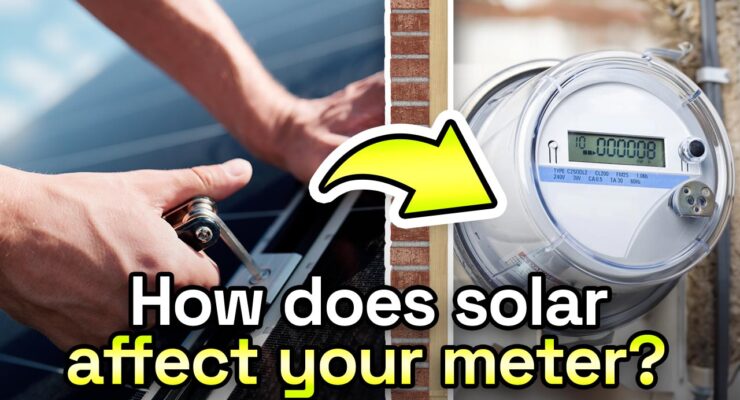Fast read
Installing solar panels on your home means you need to change your electricity meter and of course, it will also have a significant impact on your electricity bill. The new meter is going to be a "smart meter" which at regular intervals checks what you consume and also if you export any solar.
This technology allows you to use the solar your system generates in the house 1st and then export any excess solar system output.
Your new electricity meter records this excess generation, before it enters the grid. If your solar panels generate more electricity than you use at any given point and you send it back to the overall grid, your electricity retailer will credit your bill for the exported kWhs, which your smart meter recorded.
How to read a smart meter with solar panels and do I need one?
Considering installing solar panels in your home, how will it affect your electricity meter and monthly or quarterly bill? The good news is that solar energy can help you save money on your energy bills while decreasing your reliance on the grid. Learn how your electricity meter works with solar panels and how a solar smart meter can help track your energy use.
A new solar smart meter is needed
The rules regarding the electricity meter changeover vary between different regions of Australia. Usually, when your solar system is installed, your electricity retailer will replace the electricity meters in your meter box. This should happen within 2-3 weeks after the installation of your solar system.
Sometimes, the person installing can switch out the meter. If this happens, the solar smart meter will be replaced during installation or right after.
These new solar meters, called solar smart meters, are able to measure and record the amount of solar electricity exported back to the grid (not used in the house), for which you will usually receive a feed-in-tariff payment on your electricity bill.
This payment for exported solar usually applies to residential systems. Large commercial systems sometimes are not allowed to export, as the grid in their area cannot handle the extra exported load.
The new solar smart meter will also record the electricity the home or business gets from the grid. You will pay the same price for imported electricity as for regular electricity. This applies whether you have solar panels or not.

Exported and imported power will be measured
Solar smart meters track the power you use and send it back to the grid every half-hour.
Solar smart meters are able to provide more accurate and detailed information about your energy usage. This can help you better understand and manage your electricity consumption. They can also remotely send metering information back to the energy retailer/network provider for analysing and calculating electricity bills.
The time-specific measurements allow energy retailers to charge time-of-use tariffs for electricity used. This means that the rates for electricity can vary depending on the time of day, demand, and cost of production. You might pay higher rates during peak demand times. The cost of generating and supplying electricity also influences the rates you pay.
Your energy company can charge more during busy times, such as 7 pm to 9 pm. They can also offer cheaper rates during less busy times, like midnight or 2 am. Also, a shoulder or standard energy rate is applicable for medium-demand periods.
The different electricity charge structures of time-of-use can be a little scary for some consumers, who are wary of the risk of higher charges during peak price periods.
In practice, it allows consumers who become aware that they are charged different rates at different times of the day to move activities like dishwashers and washing machines to the less expensive periods of the day and therefore achieve lower electricity bills.
How do solar smart meters affect my electricity bill?
Across the country, all States offer solar smart metering for solar arrangements as described in the previous section. This is where exported electricity is recorded, and a feed-in tariff (FiT) is paid.
This “payment” will be taken out of your monthly or quarterly electricity bills. Cover charges such as the supply fee and nighttime electricity usage will be included.
The FiT amount paid has reduced over the past decade from premium rates (from 30c to 60c per kWh at earlier times), in most cases, 5-10c per kWh today.
As explained by the energy retailer, this reduced amount is meant to align with the wholesale cost of electricity. Some say the lower number better shows how much electricity is worth for the company and the grid. This suggests that the true worth of electricity is better reflected by the lower number.
When you buy electricity from the grid without solar power, you will pay the current market rate. This rate typically ranges from 28 to 40 cents per kilowatt-hour. The exact amount you pay will depend on your location. Commercial businesses, with often lower negotiated rates, may have different terms with their electricity company.
Does my electricity bill show my solar energy generation?
The solar power you use at home is not counted on your electricity bill when it’s produced. This information is stored in the monitoring program of your solar inverter. So you will not be able to see the actual overall solar generation from your PV system within your electricity bill.
As such, your electricity bill will not be a good measure of how well your solar power system is working because the more electricity you use in the home, the less solar electricity export will be shown on your electricity bill.
To see the full benefit of solar and the savings, you must ensure good quality monitoring of your solar generation and electricity consumption. Nevertheless, your inverter solution will record these details, which can be monitored through the inverter’s app. This can also be provided by specialised monitoring services like Solar Analytics.

How do I monitor my electricity generation and use?
Your solar panels will be linked to a solar inverter solution, be it a string inverter, micro inverter or optimiser with an inverter. This inverter changes the electricity from your solar panels into the type of electricity your home uses.
The inverter can track how much electricity your solar panels make and send the data to a monitoring system. You can check this information on their website or smartphone app.
This system monitors the solar energy you use and generate. It shows you the amount of money you save on your electricity bill instantly. You can track how much electricity your solar panels generate daily, weekly, or monthly using the monitoring system.
There may be an additional charge from solar installation or special software companies for access to complete information and the inclusion of consumption monitoring, which usually requires different equipment.
We highly recommend accessing both generation and consumption data. Having visibility of this information will increase your understanding of when your solar system generates electricity, how much it generates, as well as when and how much electricity you are using. Also, it will help you become alert when there is an issue with your solar panel system.
This will allow you and your family to decide and change how you use electricity, and maximise your solar system’s benefit.
Is a solar smart meter available everywhere?
Solar smart meters are now available in all states and networks, but the specific rules and regulations vary from State to State and from one network to the next. Some States have more favourable smart metering policies than others. This can impact the financial benefits of installing a home solar system & batteries.
What is gross metering?
Gross metering was the system used when solar was first installed in volume in Australia around 2006 to 2008. This means that the solar energy system measured and exported all the solar generated without passing through the house.
So the homeowner in such a metering set-up never used their own solar power. Electricity was sold to other countries. In NSW, it earned 60 cents per kWh.
In Queensland, it earned 44 cents per kWh. This was done through the feed-in tariff. So solar system owners didn’t mind such a setup as they earned a decent credit from their system.
Many solar PV systems were small, around 1 to 1.5 kW, producing about 1500 kWh per year. This could earn the owner around $900, as an example, in NSW.
In summary
Solar panels installed on your home can help you save money on your electricity bills and reduce your reliance on the grid. Solar smart meters help you monitor how much electricity your panels produce and use. You can get credit or payment for any extra electricity generated. While solar smart metering is available in most states, the specific details vary.
Your local solar professional will be able to explain the local guidelines to you.

